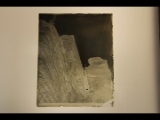Foreward.
All photos by R. D Fitzgerald are held by the State Library of NSW and have been copied by Philip Hammon. Processed by Lightroom Classic. Additional drone photos by Gary P Hayes.
The photographs on which this article is based, were taken by R D Fitzgerald, who was a District Engineer for the Public Works Department. Trove doesn’t reveal much about him, except that he won the odd golfing trophy. But, fortunately for us, he utilised his hobby to document the progress of the various schemes in which he was involved.
P.S. 10/11/20 — An email from Ron Powell, Architect of Leura, and fellow BMACHO committee member, tells me that his neighbour in the ’70s in Hunters Hill was Rob Fitzgerald’s son.
All these photos are available on the BMHS website in high resolution for further study.
Katoomba here: https://1drv.ms/u/s!AoVX2mNjkiAji0N-73ldTDnibdoq?e=qp0s9o
Leura here: https://1drv.ms/u/s!AoVX2mNjkiAji1DxzOR-3hSJXOIf?e=P1IjnY
All copies of newspaper text from Trove are in italics. Dates are supplied for your reference.
Leura Falls, being somewhat out of the way, is very difficult to photograph, and hence there are no current images available for research. Gary P Hayes of Mt Victoria volunteered to use his drone to obtain the photographs, so that I could orient Mr Fitzgerald’s photographs. See Fig 3.2.
***********************
In July of 2019 I was made President of Katoomba Rotary Club, and one of my projects was to raise the profile of the club in the town.
One idea was to have painted on the disused Katoomba Water tank, something along the lines of “Welcome to Katoomba from Katoomba Rotary”.
Despite support from Trish Doyle, the idea did not get up, as Sydney Water did not want to be seen as supporting one community group over another.
However, what became obvious during this period, was that very little was known about the building, in 1907, of the tank and the Cascade Creek Dam that supplied it. So, research was started, using Trove. i.e.
Katoomba Times 18 Nov 1892
The Katoomba Council propose to make the sewerage outlet on the Lake subdivision. If the matter is thoroughly filtered there can be no nuisance, but. for all that, we cannot see the necessity for any system.
Mountaineer 22 Sep 1905
In answer to questions Mr Alexander stated that the gas could be used for pumping at the proposed water supply and the cost per 1OOO feet would only be 2s6d or 3s as they had the plant and men and there was only the extra coal to be considered.
Perhaps electricity was more used in the inland towns of America because of the high price of coal and the amount of water power available and consequently electricity is cheaper, but in Katoomba coal could be delivered to the works at 9s per ton.
In 1905 a water supply scheme was proposed to supply the increasingly tourism centered town of Katoomba with a dependable water supply.
The scheme was finally opened on Wednesday 13th March 1907, by the Governor, Sir Harry Rawson. The supply pipes were gradually extended through the town and to Leura.
In a Facebook site called “Do you remember Katoomba when” a photograph was put up showing the Katoomba filter beds operating. Fig 1.14. Among the comments was a mention of the State Library as a source of photographs. On researching this option, I discovered that there were no catalogued photos of the water tank , but in the listings, there were a number of photographs by one R. D. Fitzgerald, with the notation “Katoomba Sewerage” and “Katoomba and Wallacia Dam under construction”. So, hoping for some pictures of Katoomba Dam under construction I requested a viewing. These turned out to be 5”x4” glass negatives, and a visit to the State Library was organised to check them out.
Your request
Access to Special Collections Request for:
Title; Fitzgerald colln. Call Number ON 147 Reference code 52067
Accompanied by Patrick Leonard, I took my trusty Canon EOS60D, because it could photograph in RAW. Having never photographed negatives before I thought that this format would give me the greatest flexibility for post- processing.
A very helpful Michael Adams “Librarian Grade 2” showed us the negatives and supervised the photographing of the negatives using a light box. I must admit to being quite excited as I saw images of the Scenic Railway incline area emerging, as well as images of the filter beds, but no photos of Katoomba Dam. Little did I know how much work these photographs would produce.
I had also requested to see an album of photographs by Charles Bayliss hoping for some new material, but they were only copies of Kerry’s and King’s photos.
Thirty-eight of the negatives were photographed, and the results were as follows: –
9 of the construction of the Katoomba Filter bed.
16 of the construction of Leura Filter Bed.
3 of the construction of the Wallacia Weir.
1 of the settling tanks between the Parramatta River and George St.
7 unknowns.
Now I had the task of converting RAW negative files into usable positives.
So, I had to learn how to use Photoshop’s Lightroom, a process that took a few days, and then a few more days……

Fig F1.1, This is what my original photographs looked like. There is a problem in photographing a glass negative like this, because it is quite difficult to determine the front of the negative when it is on a glass slide. So, it is possible to have a mirror image. That is OK where the scene is familiar, but if not, it can be quite difficult. They can even be upside down! Because I am not familiar with the Leura Falls and Cascades area, the photos in the following article needed additional drone photos by Gary P Hayes, so that could be oriented correctly.
